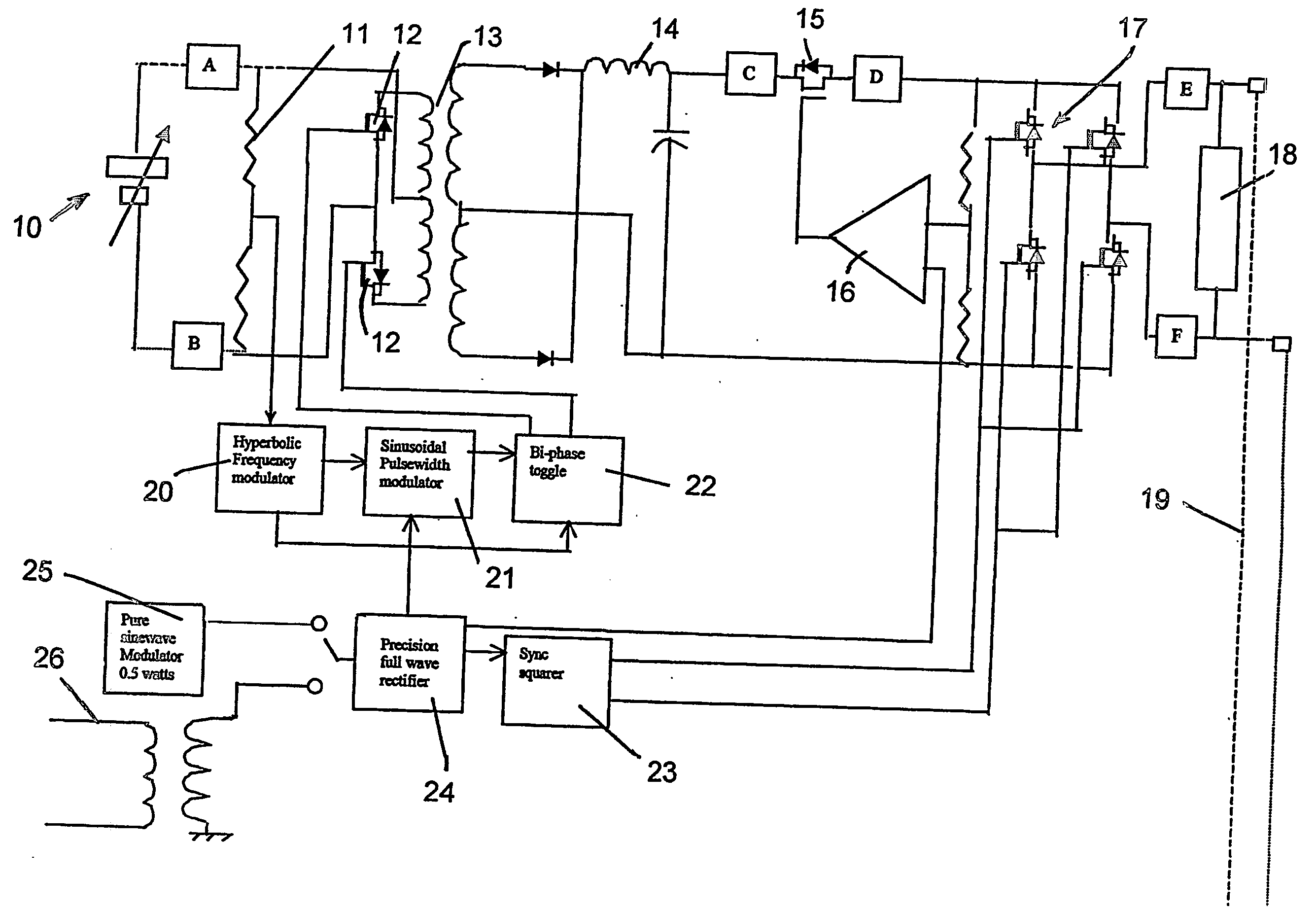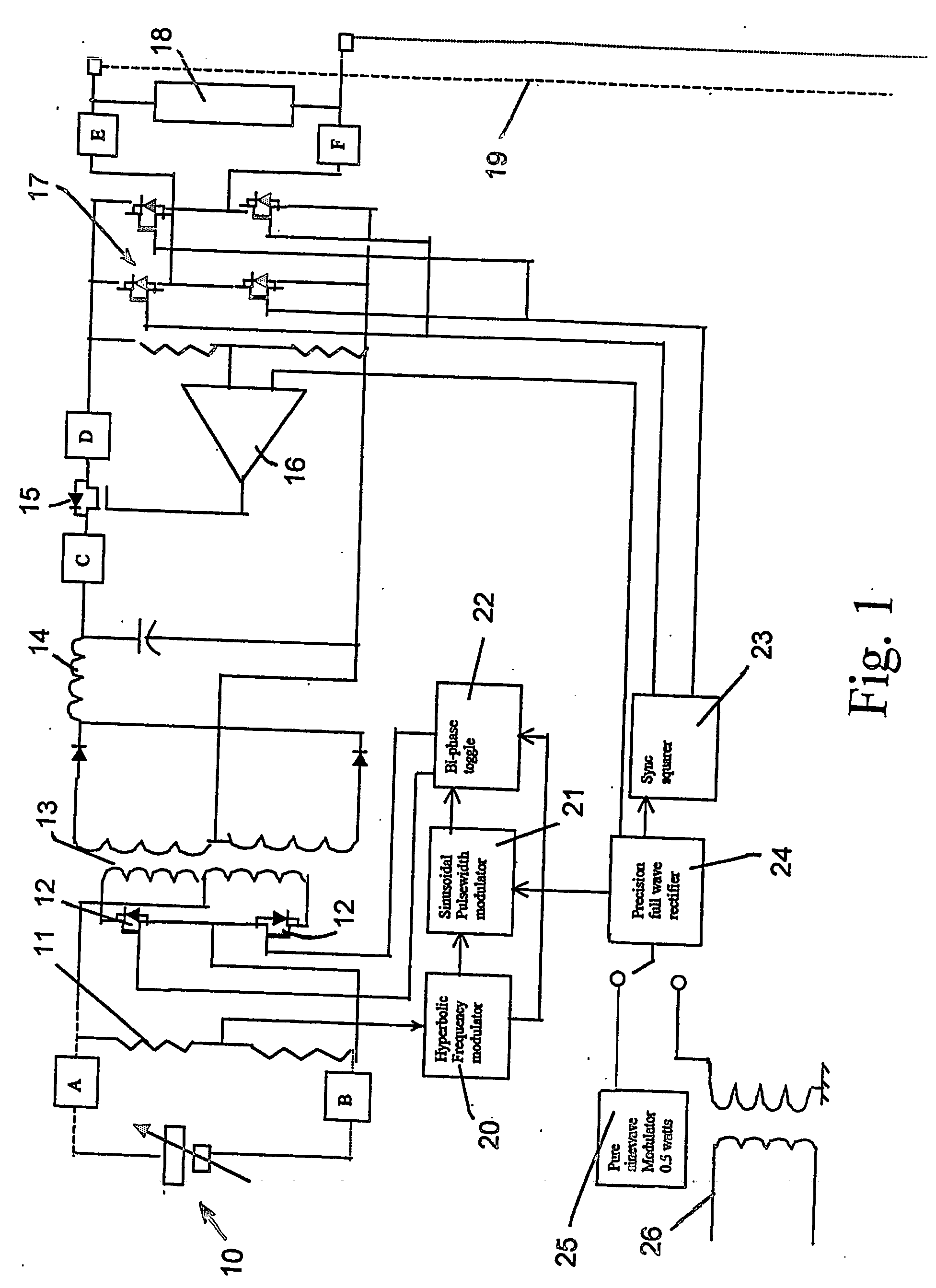Sinewave inverter using hybrid regulator
a technology of inverter and regulator, applied in the field of sine wave inverter, can solve the problems of difficult regulation and prediction, complex filtering, and not being reliable at higher powers, and achieve the effects of low loss in the pass element, high efficiency, and low cos
- Summary
- Abstract
- Description
- Claims
- Application Information
AI Technical Summary
Benefits of technology
Problems solved by technology
Method used
Image
Examples
Embodiment Construction
[0035] Referring to FIG. 1, it shows a block diagram representing a preferred embodiment of the inverter according to the present invention. The input 10 to the inverter is a variable DC source, such as a battery bank, fuel cell, solar cell bank and the like. DC voltage variations can be essentially limitless, but for the purposes of this embodiment, the minimum voltage is chosen to be 50 VDC and the maximum voltage 100 VDC. This unstable DC power is connected to the inverter at entry points “A” and “B”. Power out can also be any desired value, but herein it is chosen to be 115 VAC, 60 hz, 45 amps, i.e. 5 kilowatts. It is provided at exit points “E” and “F” of the inverter where the user's appliances requiring stable AC power are connected.
[0036] A voltage divider 11 is provided for feeding a fraction of the line voltage from input 10 to a hyperbolic frequency modulator 20. Two push-pull switching FETs or FET modules 12 are connected to a bi-phase toggle 22 which is a flip-flop tha...
PUM
 Login to View More
Login to View More Abstract
Description
Claims
Application Information
 Login to View More
Login to View More - R&D
- Intellectual Property
- Life Sciences
- Materials
- Tech Scout
- Unparalleled Data Quality
- Higher Quality Content
- 60% Fewer Hallucinations
Browse by: Latest US Patents, China's latest patents, Technical Efficacy Thesaurus, Application Domain, Technology Topic, Popular Technical Reports.
© 2025 PatSnap. All rights reserved.Legal|Privacy policy|Modern Slavery Act Transparency Statement|Sitemap|About US| Contact US: help@patsnap.com



